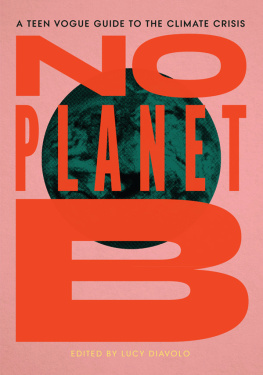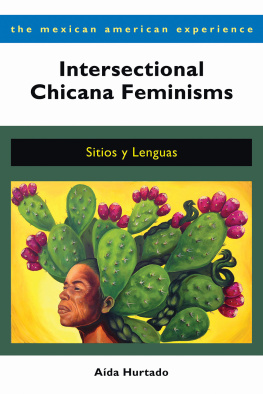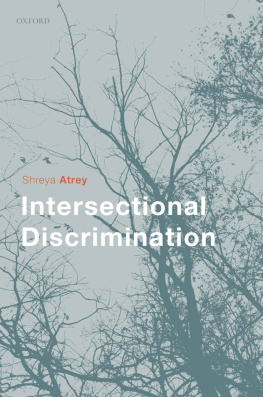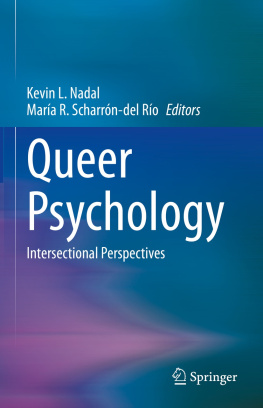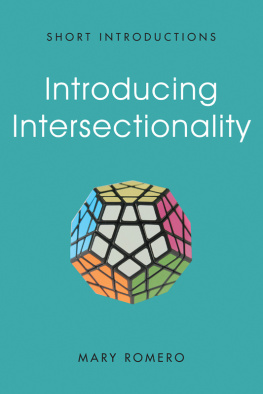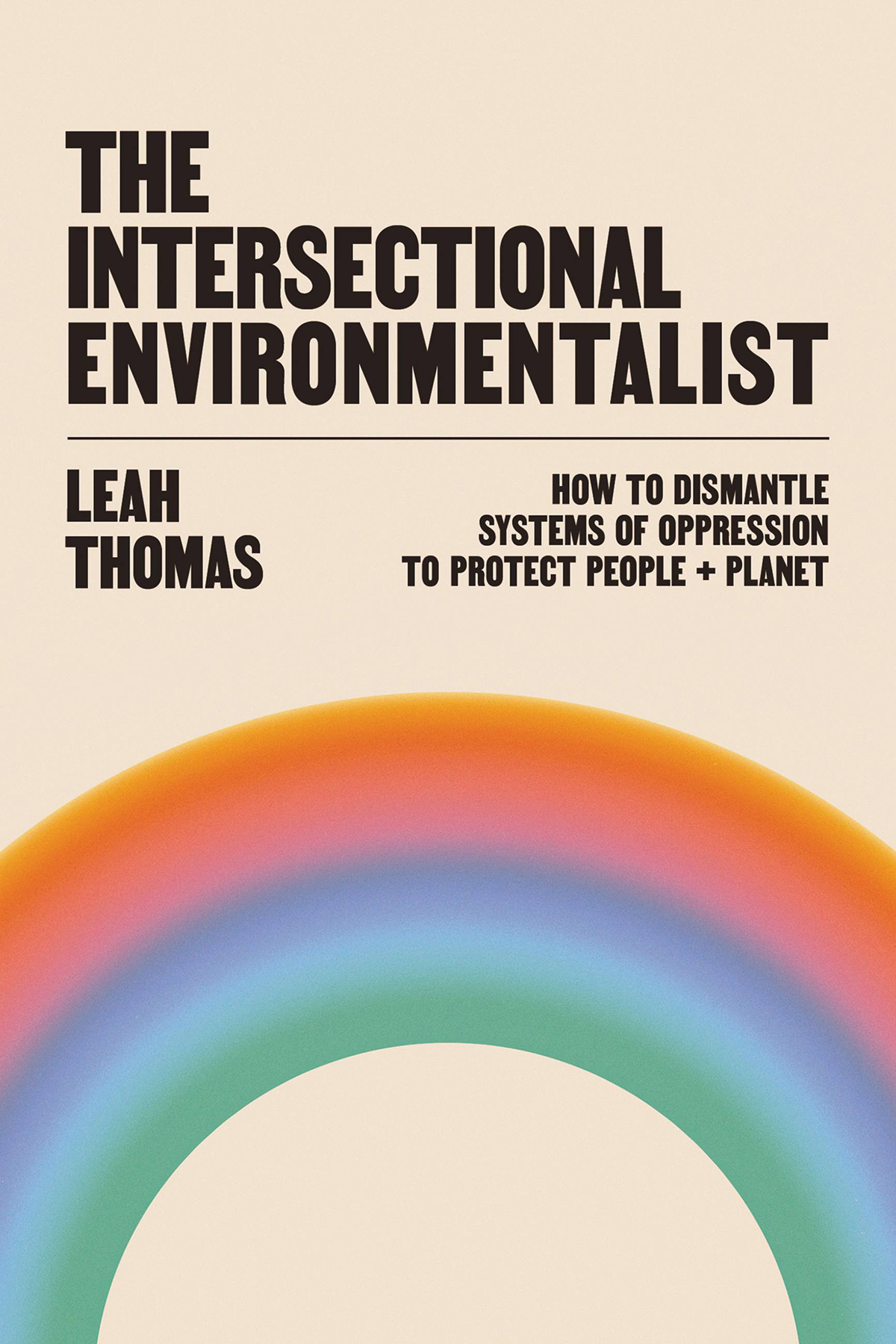
Copyright 2022 by Leah Thomas
Foreword 2022 by Gloria Walton
Cover design and art by Alexa Terfloth
Cover 2022 Hachette Book Group, Inc.
Interior illustrations by Alexa Terfloth
Hachette Book Group supports the right to free expression and the value of copyright. The purpose of copyright is to encourage writers and artists to produce the creative works that enrich our culture.
The scanning, uploading, and distribution of this book without permission is a theft of the authors intellectual property. If you would like permission to use material from the book (other than for review purposes), please contact permissions@hbgusa.com. Thank you for your support of the authors rights.
Voracious / Little, Brown and Company
Hachette Book Group
1290 Avenue of the Americas, New York, NY 10104
readvoracious.com
twitter.com/voraciousbooks
facebook.com/voraciousbooks
First ebook edition: March 2022
Voracious is an imprint of Little, Brown and Company, a division of Hachette Book Group, Inc. The Voracious name and logo are trademarks of Hachette Book Group, Inc.
The publisher is not responsible for websites (or their content) that are not owned by the publisher.
The Hachette Speakers Bureau provides a wide range of authors for speaking events. To find out more, go to hachettespeakersbureau.com or call (866) 376-6591.
ISBN 978-0-316-28193-5
LCCN 2021943101
E3-20211218-JV-NF-ORI
To Camara, because every younger sister knows their older sister is their very first and forever best friend
MY GRANDMOTHER, a farmer and descendent of people enslaved in the United States, was one of my greatest teachers, instilling in me foundational values of dignity, community, and love. I remember walking with her as a small child and her saying, with the sweetest Southern charm, Walk in front of me, honey. Put your head up! Roll those shoulders back, swing those arms, smile, and walk with purpose, ba-by! And I did!
She, alongside my mother and the matriarchs in our neighborhood, taught me that dignity comes from withinfrom the love I have for myself and my community. I was born into poverty, but I was raised by proud, resourceful Black women who took care of themselves, their people, and the land. I remember vividly how concepts like conservation and sustainable living were not theoretical to us, nor were they burdens to our way of life. They were how we got by, how we flowed in relationship to one another and our environment. We practiced the models that were passed down from generations before us, and we integrated our own experiences into lessons for the future.
My mother and grandmother made sure we didnt waste electricity or water. We reused grocery bags and canning jars, and we recycled hand-me-down clothing among our cousins. We carpooled with our neighbors to save gas and carefully stewarded what we had. We shared eggs and milk with neighbors, and we composted leftover food. We did this because we cared for one another and cared for the places we called home. I learned that caring is a practice that is good for people and good for the earth.
These grassroots values were specific results of our Black, mostly feminine, and poor lives, which of course also included immense pain and hardship as we were on the other end of every stick wielded by those in power and upheld by race, gender, and class.
I was reminded of this time and these intersections in my life when I read Leah Thomass childhood stories of waste-free living out of necessity, when I read about her own relationships and joys living among three generations of Black women. I feel some of my experience and analysis reflected in short form on her Instagram feed and smile with recognition. Our paths first crossed when I was CEO of a grassroots climate justice organization in South Central Los Angeles and Leah was an intern at Patagonia. I am grateful that Leah helped elevate the term and meaning of intersectional environmentalism, inviting all of you, dear readers, into its life-affirming vision and values during a global pandemic, an escalating climate crisis, and popular uprisings for racial justice.
Intersectionality is one of those breakthrough academic conceptsthis one coined by the inimitable Kimberl Crenshawthat, for millions of people, including Black women like her, and like me and Leah, is simply how we live. Just as Kimberl Crenshaws own lived experience gave rise to this foundational framework of critical race theory, her story and scholarship have offered the world a glimpse into our daily reality. Seeing how we, as Black women, can transmute terror and trauma into a vision for something beautiful, collective, and strong is what makes intersectionality so critical to solving the global climate crisis. It is also what makes critical race theory so scary to those clinging on to treacherous power. Because if we can create the future we want despite the realities of not only racism, but also sexism, poverty, and other oppressive systems, imagine what all of us can do and be when those systems crumble and we are all free. As Leah says, the future is intersectionaljust as the past and present are too.
The era of a single-savior, top-down, and siloed approach to change is over. The old way of thinking about environmentalism as a single, distinct issue is long gone, because people are seeing that the solutions to our problems come from within ourselves, and from within our communities. People are empowered and coming together to create the change they want to see, the future they want that reflects their values and visions. And our intersectional lives are at the center of it.
As Leah lays out in the book, it is up to us to change the status quo, because many gatekeepers in the climate movement are still catching up and most of their ideas continue to benefit the few. Intersectional-focused organizations working for climate equity and justice still receive less than 5 percentby the most generous accountingof the total $2.4 billion granted annually for the environment. Within that, an even smaller fraction goes to nonprofits led by Black people, Indigenous people, immigrants, and other people of color. Women of color receive just 0.6 percent of total philanthropic benefit in the United States across all issue areas, despite being the backbones of most communities.
This is why, as Leah explains in this book, the fundamental truth is that we cannot save the planet without uplifting the voices of those most marginalized. These solutions are already being born from organizers in communities of color on the front lines of the climate crisis, many of whom have lived experiences that give meaning to intersectional environmentalism, even if theyve never called it that.
As CEO of The Solutions Project, Ive had the privilege of working with many of these organizers as they address the issues facing their communities. Take Louisianas cancer alley, where over two hundred petrochemical plants line eighty miles of the Mississippi River. The EPA says the cancer risk for the areas majority Black population is up to fifty times the national average. When the local government quickly granted permits for a new $1.25 billion plastics plant that would further poison the area with toxic chemicals, former teacher Sharon Lavigne and the community-based organization she leads, RISE St. James, organized, mobilized, and ultimately stopped the plant from being built. They gained recognition from the United Nations, Sharon was honored with the prestigious Goldman Environmental Prize, and her story was covered in People magazine.
Other everyday heroes come from the Four Corners region of the western United States, where fifteen thousand Hopi and Navajo families live in homes without electricity. This is despite decades of outsiders benefiting from coal, uranium, oil, and gas extracted from reservation land. Two Navajo womenorganizer Wahleah Johns and engineer Suzanne Singer, PhDstarted Native Renewables to design and deploy affordable solar photovoltaic arrays and storage systems that can, for the first time, bring electricity to far-flung off-the-grid homes on the reservation. Native Renewables also trains Indigenous people for clean-energy jobs. Now Johns is senior advisor for the Department of Energys Office of Indian Energy Policy and Programs, seeking to apply her experience to helping the more than five hundred other Indigenous nations within the borders of the United States.
Next page


